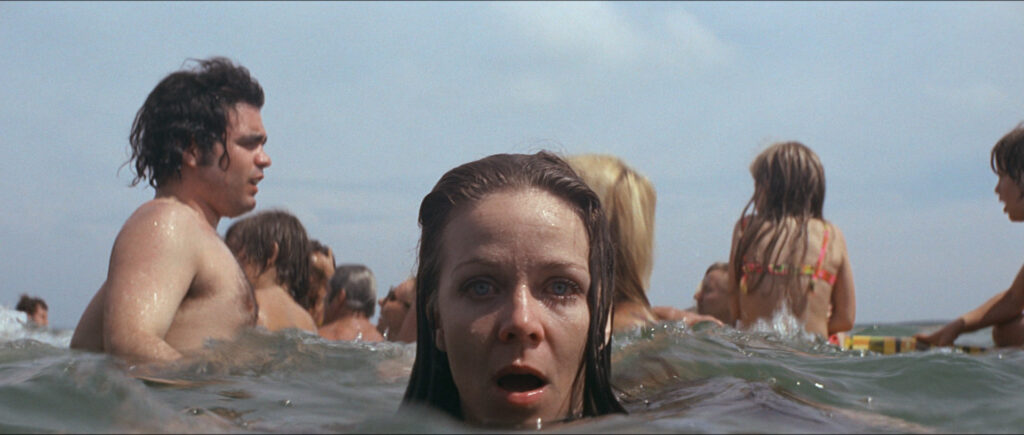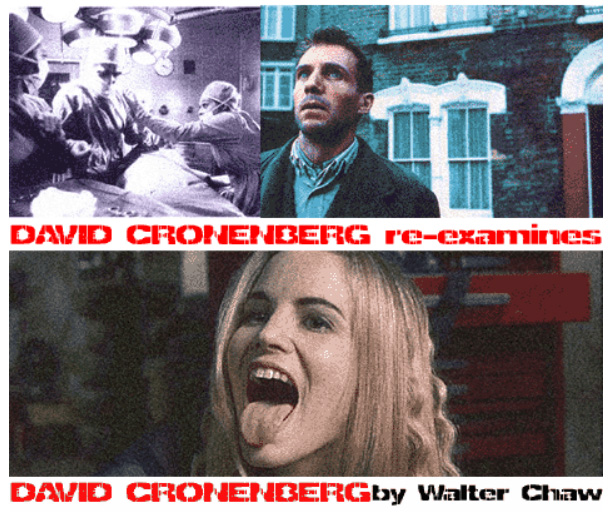**½/**** Image A- Sound B Extras A-
starring Roy Scheider, Lorraine Gary, Murray Hamilton, Joseph Mascolo
screenplay by Carl Gottlieb and Howard Sackler
directed by Jeannot Szwarc
by Bill Chambers Some key players besides Roy Scheider stuck around for this second helping of Jaws, which accounts for the tonal continuity and touch of class that are absent in the subsequent sequels. Producers David Brown and Richard D. Zanuck prostituted their box-office sensation because, according to Brown in Jaws 2's DVD documentary, "We decided if we didn't make it somebody else would make it. We felt very protective about it." Screenwriter Carl Gottlieb again returned to do the production draft. Production designer Joe Alves exhumed, and expanded the scope of, Amity Island. John Williams adapted his indelible Jaws score for a more youth-oriented adventure. And on screen, Lorraine Gary, Murray Hamilton, and Bruce reprised their roles as Mrs. Chief Brody, the unconscionable mayor (who, in the movie's darkest joke, is still in power), and the mechanical shark, respectively.
1978's Jaws 2 hits an unsurpassable ceiling, though, due to the joint absence of Steven Spielberg and Academy Award-winning editor Verna Fields; gone is the pair's sense of economy. Some visual unity is also lost with Jaws DP Bill Butler being replaced by Harry and Tonto cinematographer Michael C. Butler (no relation, as far as I know), who oversaturates the coastal scenery and eschews Spielbergian timelessness in favour of fashionable but gratuitous zooms. Although they both hail from television and Rod Serling's "Night Gallery", director Jeannot Szwarc seems more firmly in the TV tradition than does Spielberg, with each camera set-up rotely predictable and each character locked into their dramatic function.
Scheider is a glowing exception to the rule, however. From Chief Brody's entrance, set to a high-school band's curiously urgent instrumental rendition of "Downtown," he's anxious, nay, shell-shocked and trying to keep a lid on it. We don't even need to see his face: it's in his shoulders, the tension of his gait. As the character grows panicked and obsessive, Scheider does what movie stars have done since time immemorial and makes coming apart at the seams charismatic and vaguely glamorous. It's safe to say that Jaws 2, for all its virtues, would be nothing without Roy Scheider. Here, Brody once again contends with skeptical, venal council members when he gets a hunch that another great white has infested local waters. After his sons become mixed up in the local sailing scene (which Gottlieb based on the car cruising subculture of '70s teenagers), thus volunteering to be shark bait, Brody defaults to full reconnaissance mode.
Scheider's co-star this time is the title creature, shown here with near-reckless abandon–it's genre tradition to cloak your villain the first time out and be the opposite of bashful the second–and bloodthirstier than his precursor. But there's not much meat for either Bruce or us to feed on in Jaws 2. Those teens, including a young Keith Gordon, are archetypal to a fault, and instead of getting resolved, the various subplots between them have a habit of dissipating in a chorus of shrieking.
Still, the central conflict and handsome production values make up for a lot, especially through the lens of Jaws 3-D and Jaws the Revenge; the picture was very clearly not assigned to the B unit. There's an attempt made by Brody to contact his surviving shipmate from Jaws–the filmmakers may, like Brody, have to suffice without the buddy-movie support Richard Dreyfuss (a.k.a. Hooper) brought to the original, but they want you to know they're trying, and that they have no intention of downplaying your attachment to Jaws 2's über-successful predecessor. Szwarc is respectful and ambitious, even when he's not up to the task.
THE DVDFittingly, Universal's Jaws 2 disc is not on a par with their DVD release of Jaws, either, but still satisfies perhaps more than it ought to. For the first time since the 1992 LaserDisc, the film's 2.35:1 aspect ratio has been preserved on home video. While the print used for this transfer is dinged in spots, the anamorphic image is significantly cleaner than ever before and artifact-free, with rich blacks and sharp shadows. Although a 5.1 remix was destined to be well-received, the Dolby 2.0 mono audio is about as good as the format gets. Williams's score often sounds deceptively stereophonic.
Laurent Bouzereau assembled the aforementioned "The Making of Jaws 2" (45 mins.), which reconfirms, through new interviews with talents such as Szwarc and Alves, the frustrations of setting pictures at sea in the pre-CGI world. Sadly, Scheider is AWOL from another Jaws doc, though Szwarc reveals that it took a while for the unhappy star to recapture his inner Brody. Excerpted within this making-of and shown fully in a separate section are four deleted scenes (in non-anamorphic 2.35:1). Most, if not all, were removed for pacing considerations (poor Hamilton lost his lone sympathetic moment), but a particularly gruesome fatality was cut because it pitted the producers against the ratings board.
A sweet, eight-minute or so reminiscence from actor-turned-auteur Gordon, a brief featurette about "The French Joke" (don't ask), storyboards for three action sequences, "shark facts," a curiously unbroken block of trailers for Jaws 2 (plus previews for Jaws, The Mummy, and Tremors among the handful of "recommendations"), production notes and stills, cast and crew bios, and a link to Universal's DVD newsletter contribute additional bite to this package, whose main menu features a startling animation.
117 minutes; PG; 2.35:1 (16×9-enhanced); English DD 2.0 (Mono), French DD 2.0 (Mono); English SDH, Spanish subtitles; DVD-9; Region One; Universal







